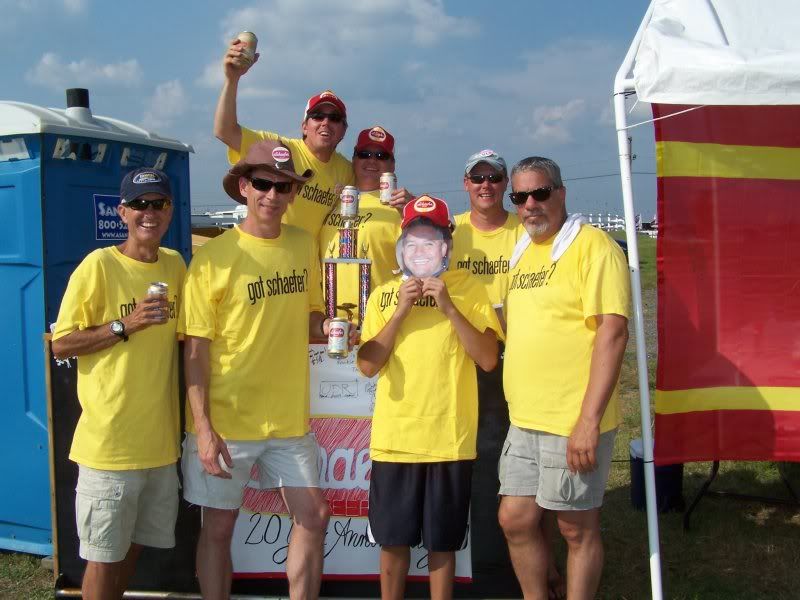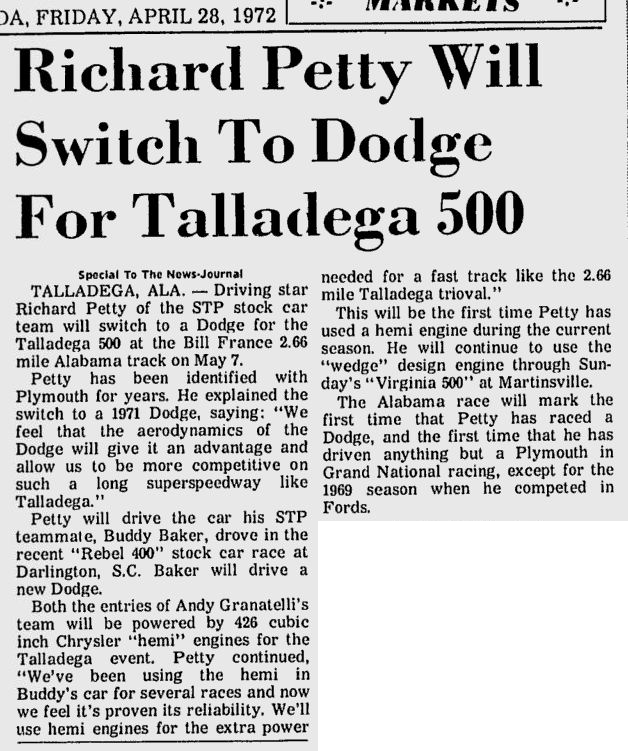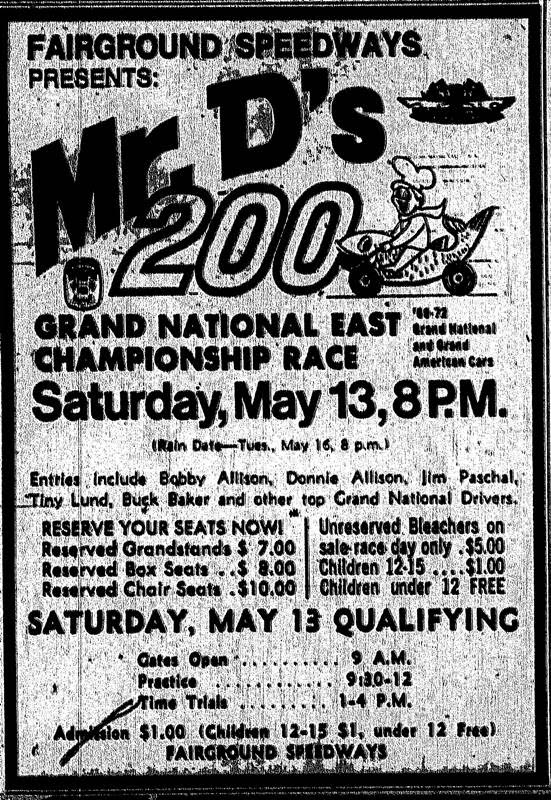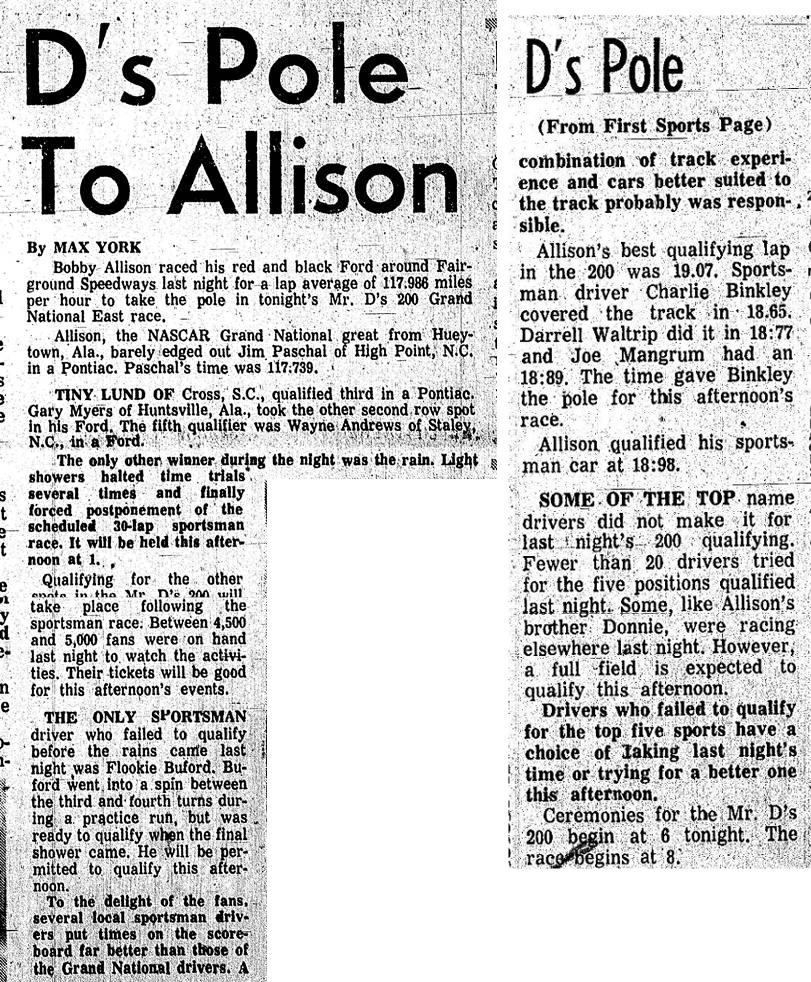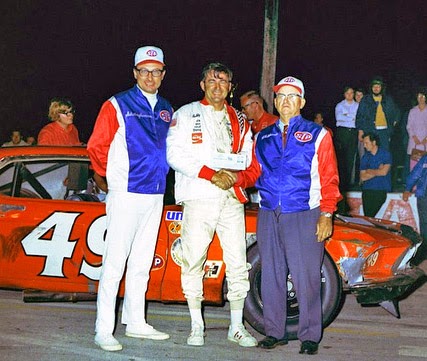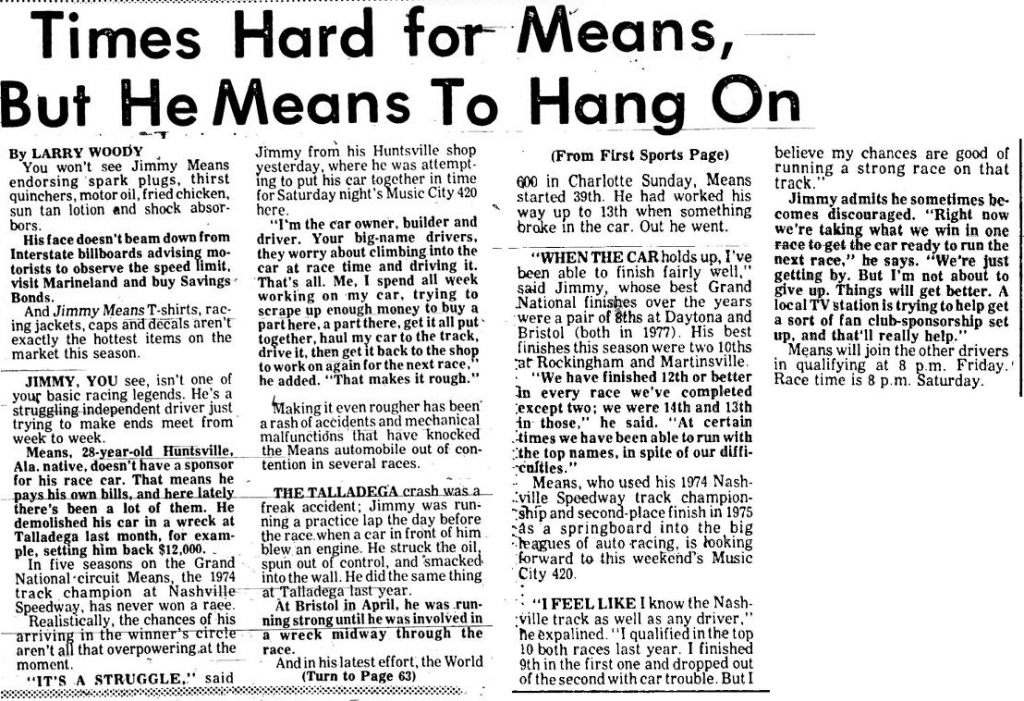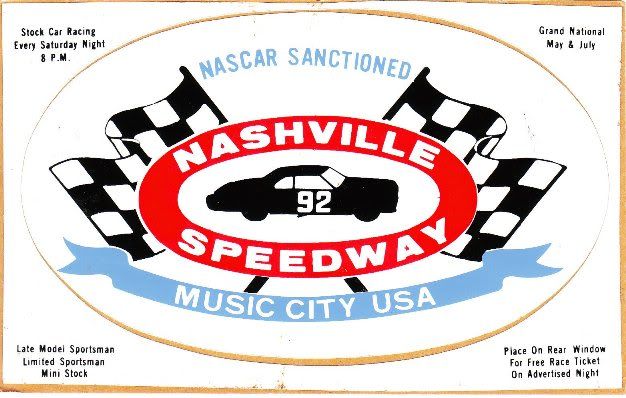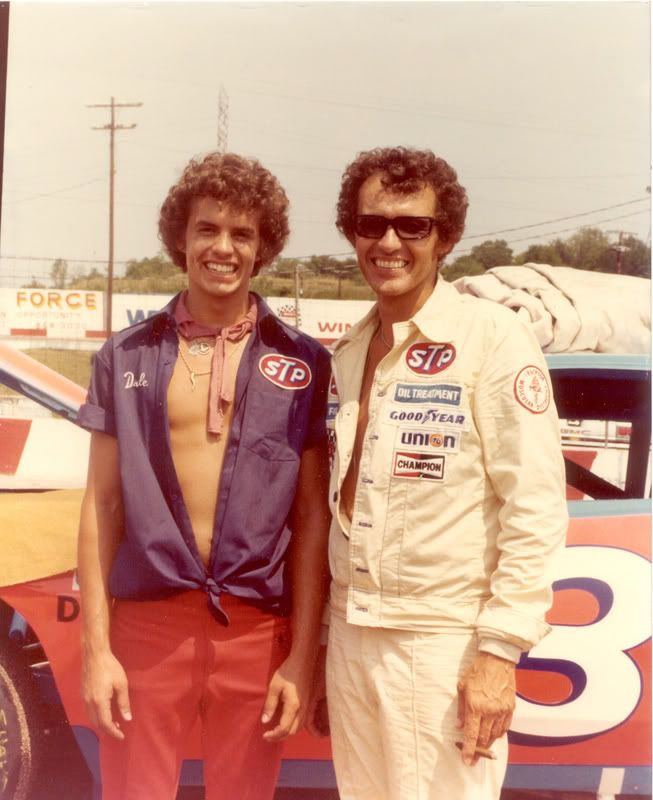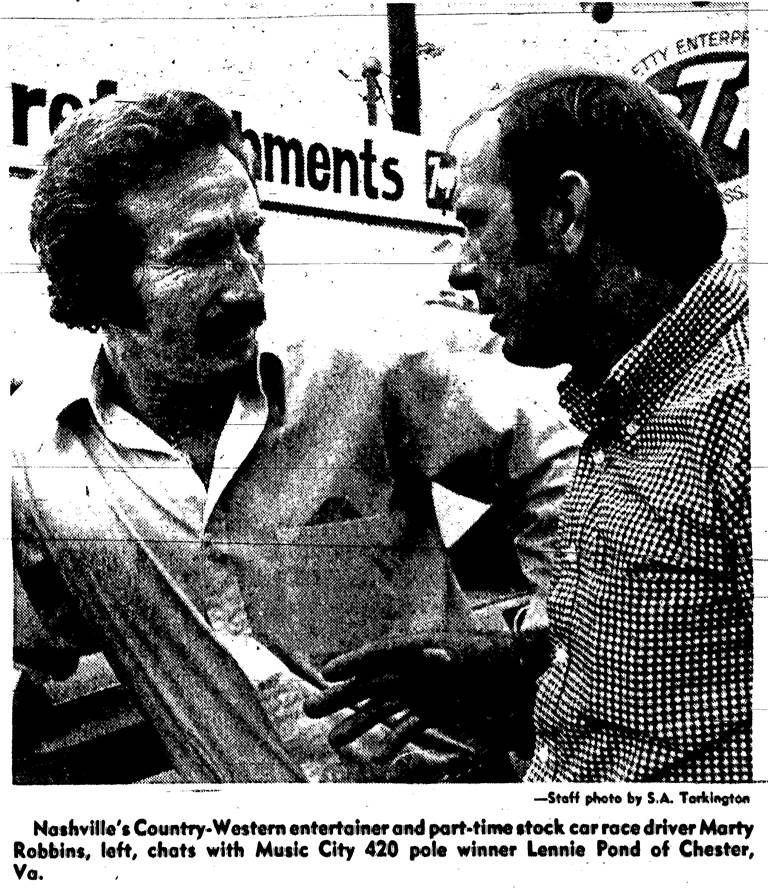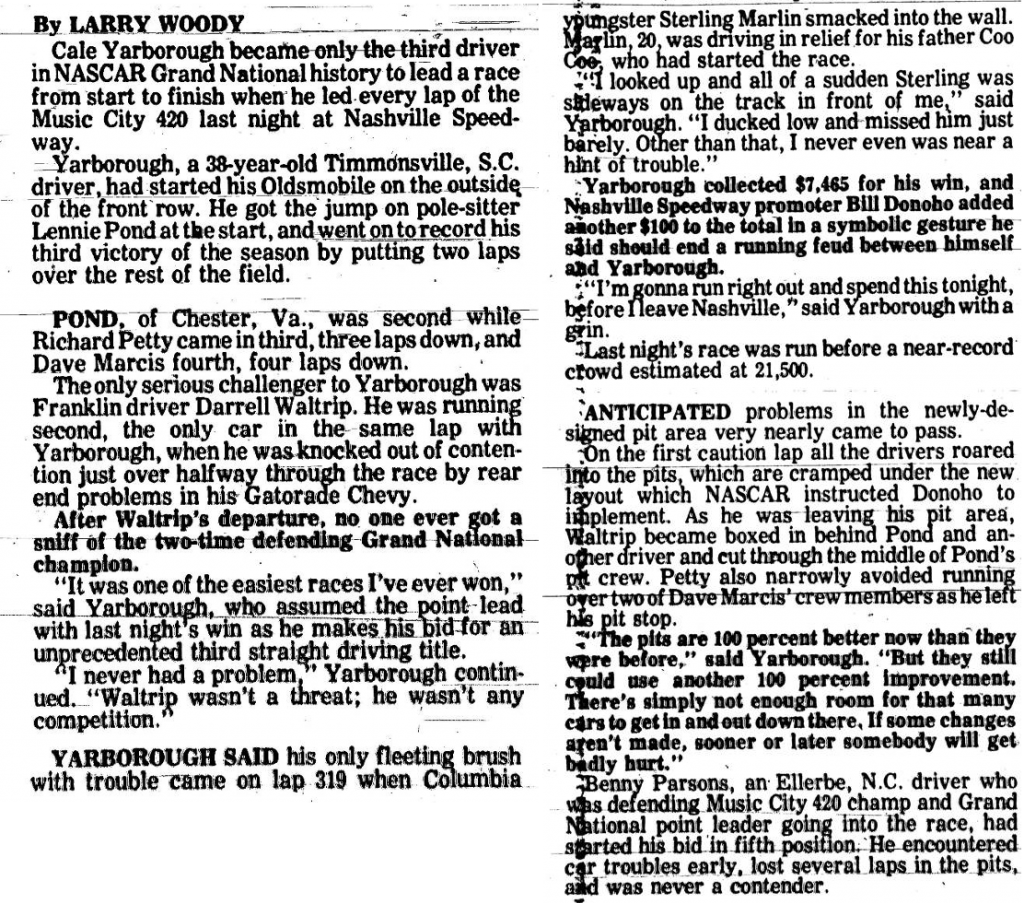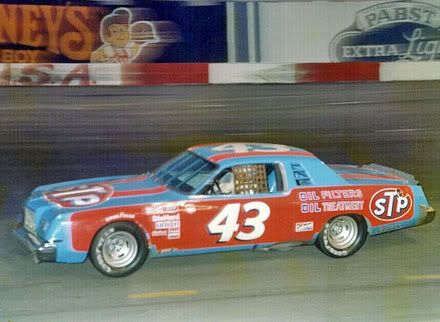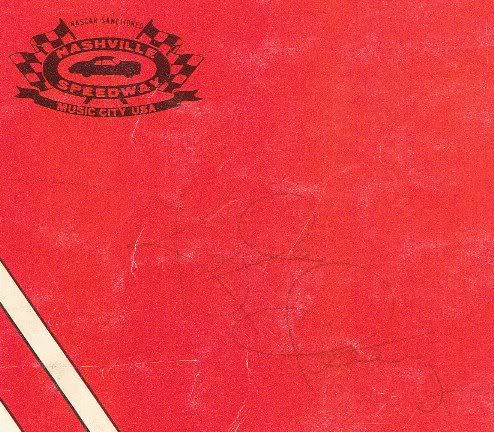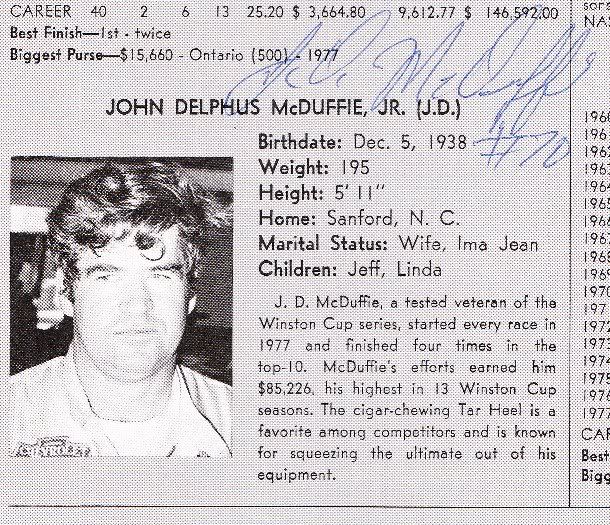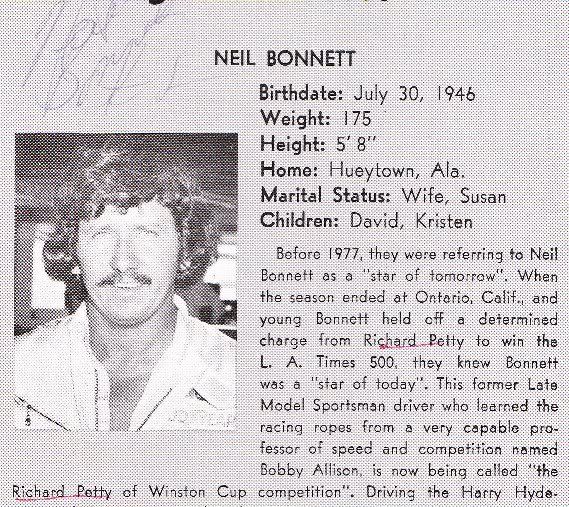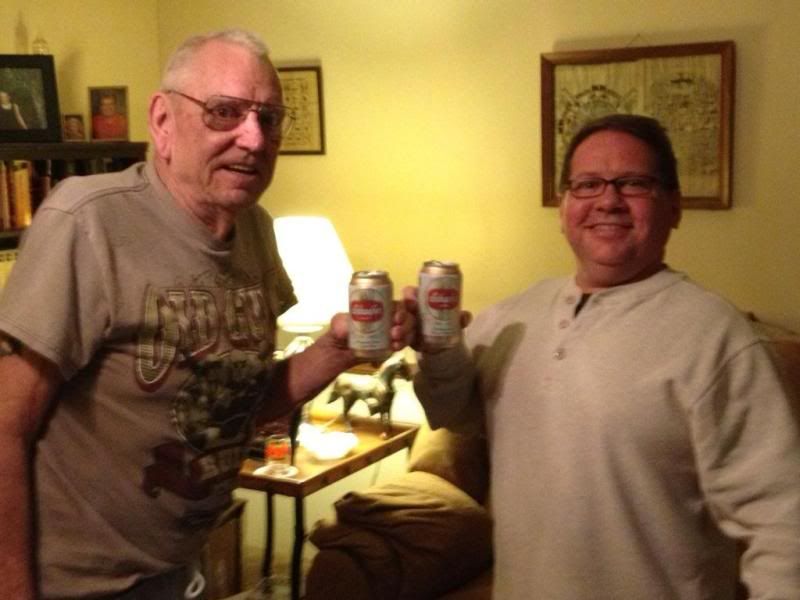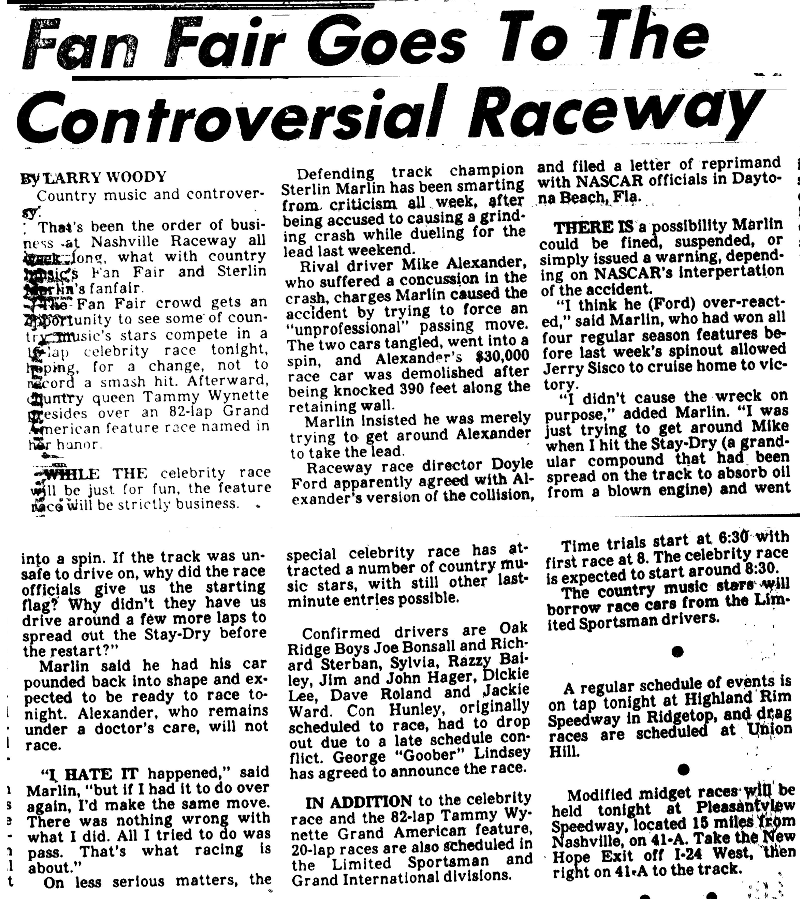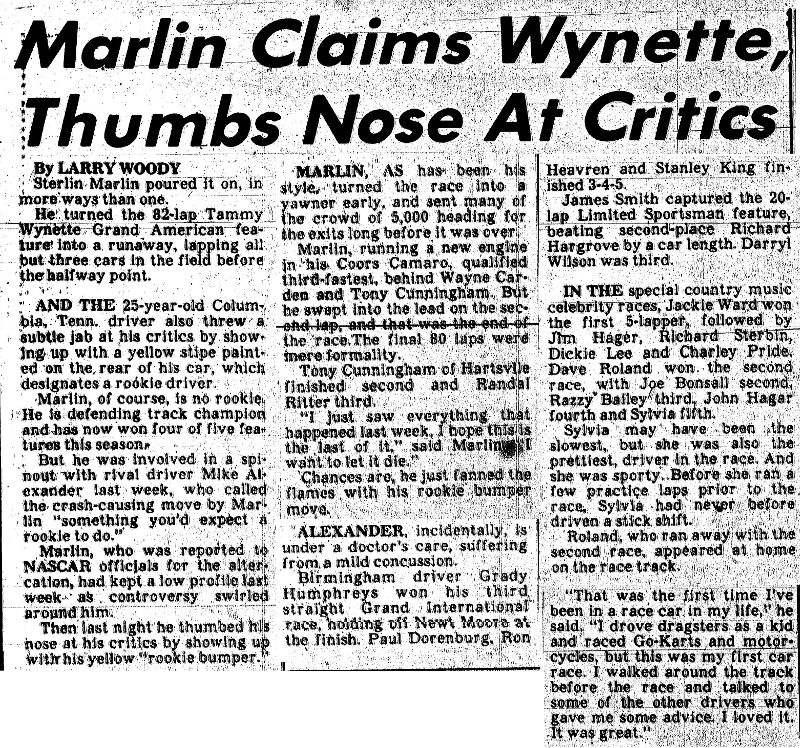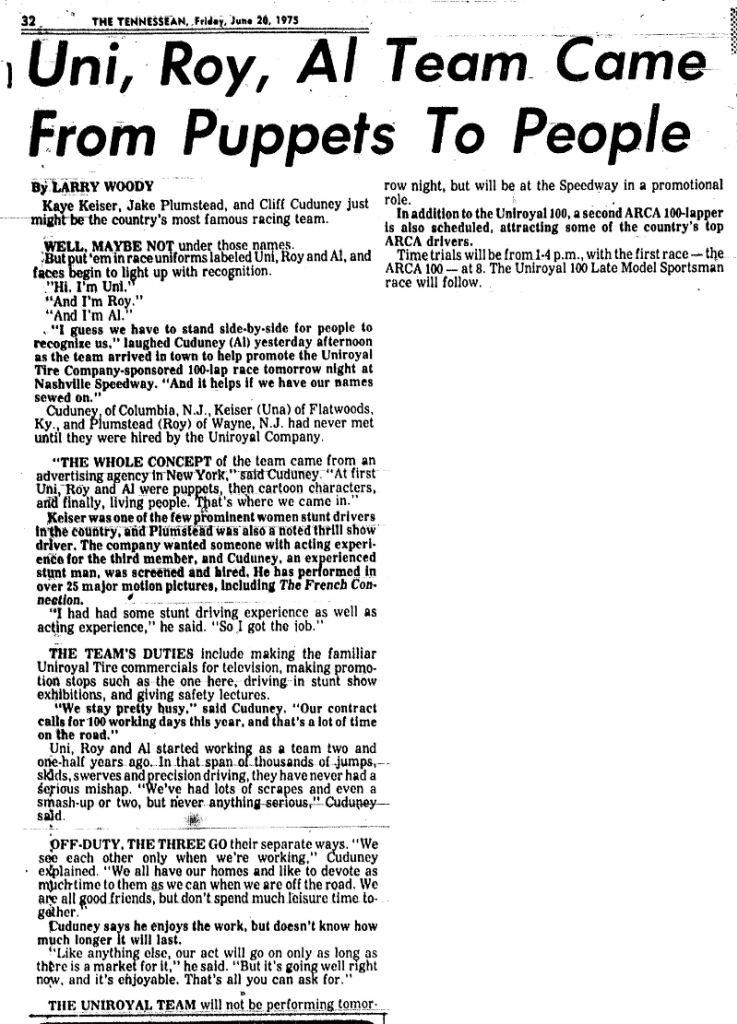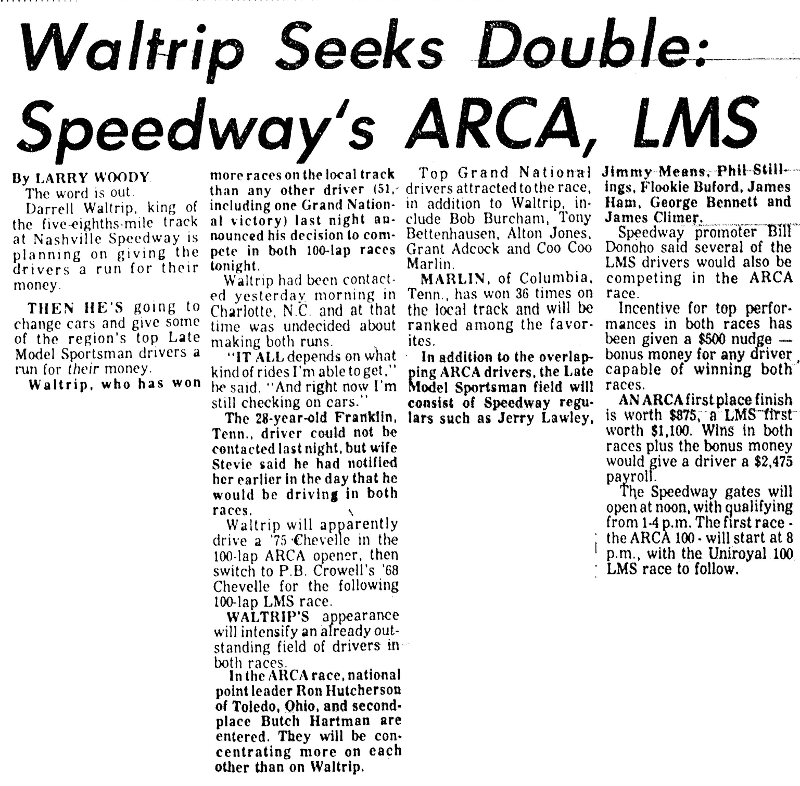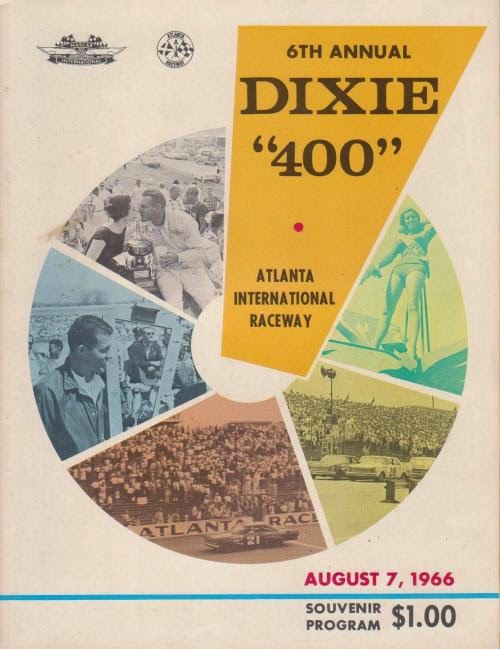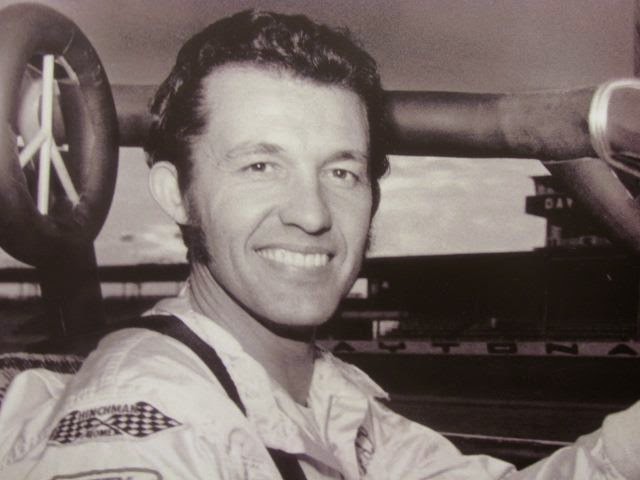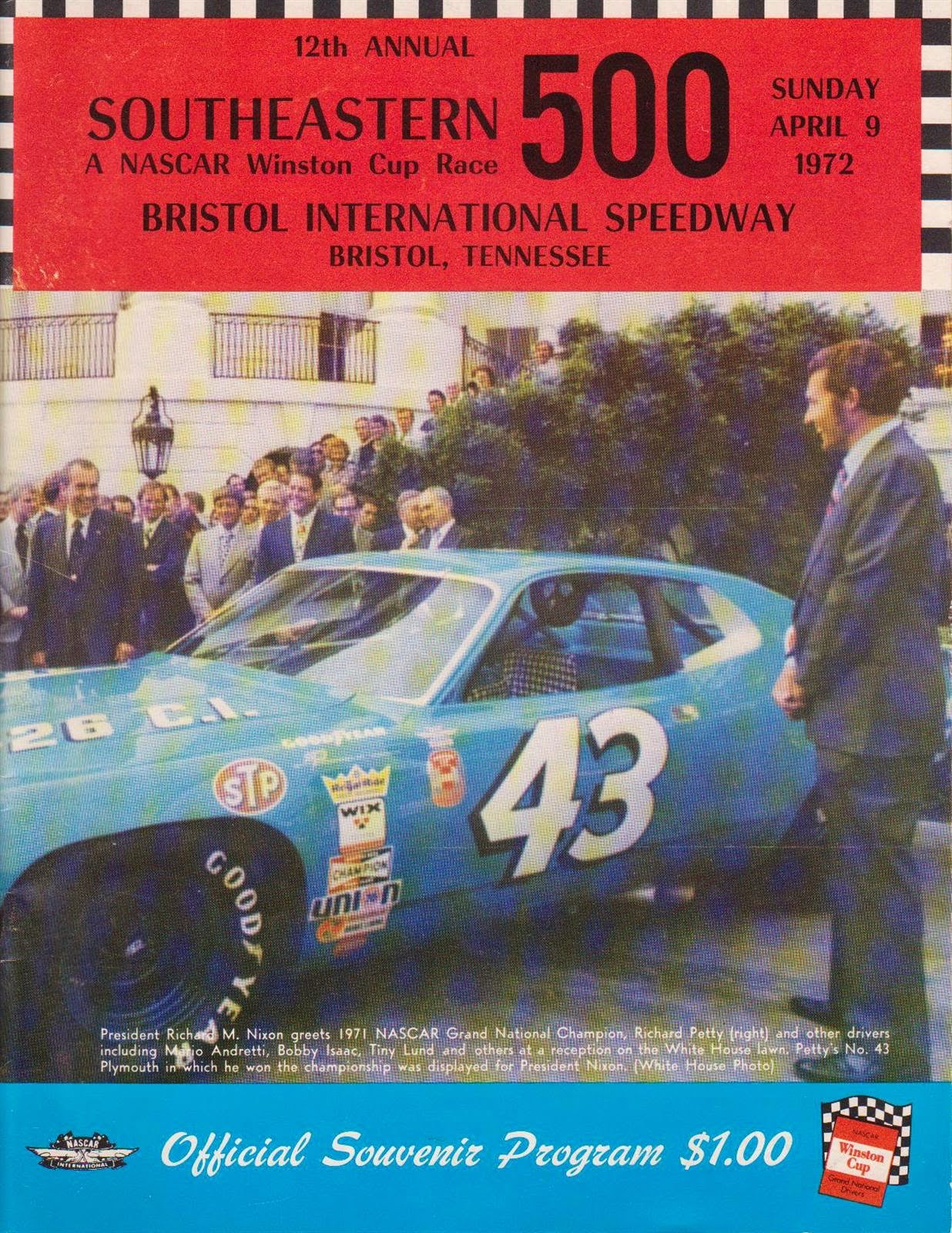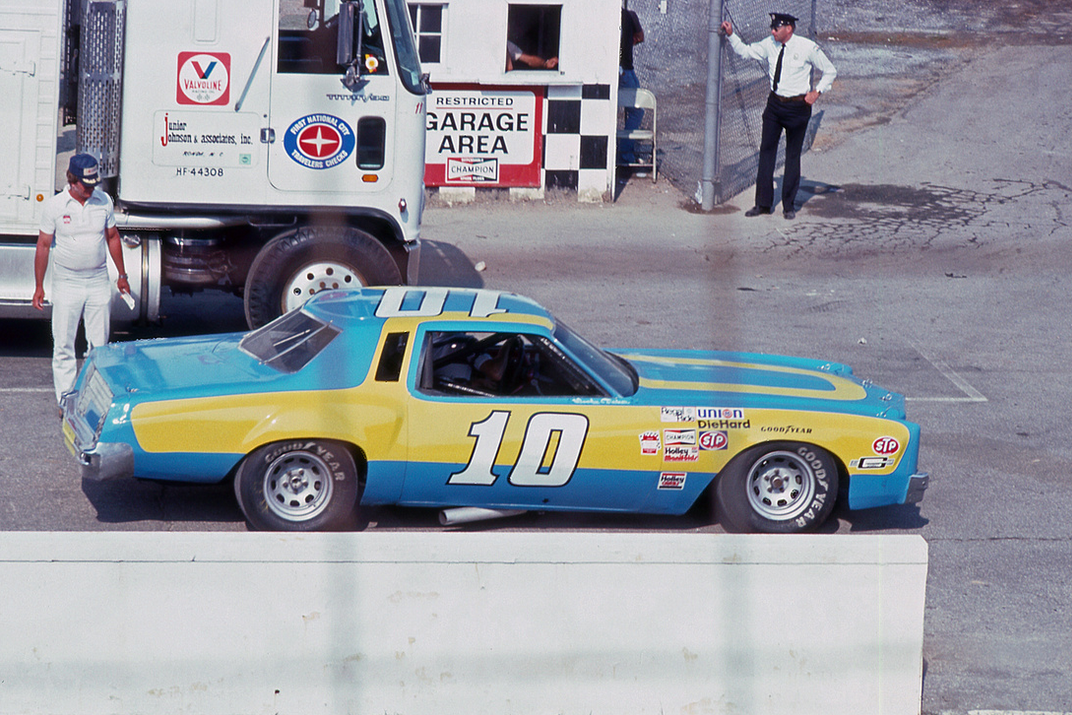he·ro (ˈhirō/)
noun
a person, typically a man, who is admired or idealized for courage, outstanding achievements, or noble qualities.
My uncle slipped away Wednesday night, January 7, 2015, after a six-year or so battle with lung cancer. He not only was my uncle - he was also a hero of mine based on the above definition.
He went toe-to-toe with his disease, followed the treatment plans prescribed for him and made a few lifestyle adjustments. At his core though, he lived his life just as he always has - hard working, a bit rambunctious and selfless support of others.
He is responsible for getting me hooked on racing. My dad has always been a college sports fan - the Tennessee Vols specifically, the Southeastern Conference generally and Notre Dame not at all. Though I enjoyed watching the games some as a kid, I simply didn't develop the passion for it - nor for other traditional sports.
But one night in summer 1974, Ronald drove to our house, decided he wanted to go to the Nashville's Fairgrounds Speedway, loaded up Daddy and me in his car, and off we went to watch a 200-lap late model sportsman race. I don't recall who won, if anyone else went with us, getting home, or much else about the night. Yet, I was hooked for life.
As a Chrysler man from the time he exited the US Navy in the late 1950s, he latched on to an electric blue Plymouth in the early 1960s. The driver's name was Richard Petty. He didn't pull for him because he was Lee's son - or because he was the King (that label came in the late 1960s). Nope, he pulled for him because he raced a Mopar and because he thought the blue paint job was cool.
My dad says he remembers Ronald having a Plymouth Barracuda screamer in the 1960s. But my first memory of his car was from the early 1970s - one of those ridiculously long Chrysler Newports. I recall a baby blue one he had that was as long as a Kansas prairie.
His Petty fandom was cemented when he got the opportunity to meet the King and watch him endlessly sign autographs for everyone who came to his appearances at car dealerships in Maryville and Kingsport, Tennessee. He even convinced my aunt to name their second child Richard. My aunt told me years ago he lobbied for "Richard Lee" (Petty's first and middle name), but she drew the line after the first name.
A few things I'll always laugh about as they come back to mind:
- He was was the first relative - maybe the first person - I knew to have a tattoo. He sported Popeye on his bicep, ink he got while enlisted in the Navy.
- He was the first family member I recall who drank regularly. My dad had the occasional brew when we were young - at Pizza Hut when we'd go with friends. But he didn't keep it at home, and my mother made the conscious decision at a young age not to drink. So having that bit of outlaw spirit so to speak in the family was cool to me. My mother recoiled when she learned I'd bragged at school in third grade "My uncle drinks beer for breakfast!" An individual can be a hero without being perfect.
- He could use "the damn..." as the object of any preposition. He'd lose his train of thought in a sentence but could rally a finish with "the damn..."Hell, we drove back from Hickory one time *chuckle* with a load of the damn...
Around 1960, he was in an awful car wreck with three other men. The two in the front seat lost their lives. He suffered a badly broken leg, and his back seat bud was launched through the windshield. The guy survived his trip through the glass - though his left leg did not. As the two spent time recovering in the hospital, my uncle's sister spent time getting to know his buddy who was down to just one leg. Turns out their new found friendship blossomed into a pretty good future together. They got hitched in 1963, I was born about a year year later, and they recently celebrated 51 years of matrimony.
Ronald and my aunt lived in Knoxville in the early 1970s. I vaguely remember the one trip my family and I took to visit them. My mother told me go to bed at my normal time as an effort I guess to keep some sort of rhythm during the trip. I remember being almost asleep when my uncle opened the door and asked loudly "
Are you ready to go to bed?" I told him no because I thought it was cool being at his house. He told me to get up and go with him. He then sat me on the couch next to him, cradled me with a vice grip shoulder hug, and told his sister "He ain't going to bed right now. He'll go to bed when
we're ready."
In the late 1970s, he worked construction in Tanzania Africa and Saudia Arabia. On one of trips back home, he came to the house with a six-pack of Miller Lite to spend a bit of time with my parents. Five of them were emptied, but the sixth can stayed in our refrigerator for ages. I often asked my mom if we should just toss it. Though she wanted no part of drinking herself, she declined to toss the can thinking her brother may want it when he returned for another visit. Ronald did return a year or two later for another visit - and he did drink that remaining Lite. I cringed at what a two-year old beer must taste like even with it being in the refrigerator the entire time, but I thought he had to be a bad ass to drink it without wincing.
After being introduced to racing in the early 70s, I got the itch to go to a big-time Winston Cup race. My family accommodated my new interest to a degree. We went on Saturday nights to see the local guys race quite a bit over the next few years. Yet I wanted to see The Big Time.
On June 3, 1978, my aunt and uncle came by the house, again picked me up, and squirreled me away to Nashville's track. That night, I got to see those amazing cars and drivers under the lights of Nashville's banked, half-mile. When the race was over, I figured we'd head for the car as we always did. Instead, he pointed for the gate. We crossed over the front straightaway, meandered through the pits, and brushed by the winning driver - Cale Yarborough - who presumably was headed to do media interviews. I'm sure I was grinning from ear to ear - but I was also focused. I remember seeking out the famed 43. One of them snapped this pic of me when we finally found it. I'd like to think it was him, but it was likely my aunt as I'm not sure he was in best of shape to frame and snap a photo! Nonetheless, I remain grateful to him for caring enough to provide the experience for me.
![]()
My first trip to the Daytona International Speedway took place two years later in February 1980. Ronald arranged with my folks to take me to my first Daytona 500. My mother loaded me on a Greyhound bus on a Friday evening, and I rode overnight from Nashville to Jacksonville. The plan was for me to go to the race with two of my uncles, my aunt, and Ronald's girlfriend. On Monday, Ronald would drive me back to Tennessee so I could get back to school Tuesday. After a day of living large at the track and an impromptu decision of "nah, I think I'll stay in Florida a few more days", however, I was left without a ride home. He didn't ditch me. Instead, he took me to the airport, bought me a one-way airfare aboard Eastern Airlines and made sure I was safely aboard before leaving.
From the early to mid 1980s, he worked construction projects in Egypt as part of the US-negotiated Camp David peace accords. Begin and Sadat agreed to get along with each other via President Carter, and the US agreed to bankroll a bunch of infrastructure improvements in Egypt. Seems logical, right? Hmm.
In the pre-internet era, news from home was hard to come by - especially racing news. In high school, I periodically air mailed him news clippings of various races from
The Tennessean paper. Around that time, I also began subscribing to Hank Schoolfield's
Southern MotoRacing bi-weekly newspaper. When I got to college, I splurged for a second subscription and sent the extra issue to him. When the project ended, he really made it a point to thank me for keeping in the loop and allowing him to have a bit of home in the Middle East.
He was generally good about mailing me back with letters of what work and life was like while in Egypt. My uncle seemed to never meet a stranger. He'd get along with anyone - including some pretties he met while in Egypt!
After graduating from college, my bud from school and I set up home in an apartment. I didn't have much to contribute. My roommate had a small table for the kitchen, a broken coffee table, a grill and an aquarium. I had less than that. My uncle was stateside for vacation and offered us use of his furniture he had in storage. He, a buddy of his, and I left Chattanooga for Atlanta one summer morning and stopped for coffee. About the time we got back on I-75 sitting 3-wide on a pick-up bench seat, a searing heat hit my crotch. He'd splashed his coffee on me deliberately. "Well, you're likely to burn your pecker with this stuff anyway. So I figured you might as well get it over with." Of course, it was followed by a huge laugh - by two of the three of us.
In July 1991, he and cousins loaded up for another trip to Daytona. We headed to Jacksonville again to stay with another uncle, his youngest brother (who we stunningly
lost to cancer in 2010). When they took me in 1980, I was a naive teen. Eleven years later, I was ready to live large. We all sat in the hot, Florida sun pounding brews as the cars circled at fantastic speeds in breathtaking packs. After we got back home, an impromptu hoops game broke out. Plenty of smack was thrown about, and many bricks were launched. I'm pretty sure the sweaty stench from that driveway rivaled any landfill. But every one of us was laughing, and when the camera came out Ronald was ready to ham it up for posterity.
A month later, the same lot of us loaded up again for a weekend of camping and racing at Talladega. The one trait I'll miss most about Ronald was his sense of humor. He always laughed. Always. And at times, it seemed he liked nothing better than getting one over on his
older brother. My oldest uncle has always been consumed by what things cost, what kinds of deal he can wrangle, and assigning his own
market value to stuff.
At the summer DieHard 500, a buddy of ours had a Michelob-branded cooler (shown in the pic below). He'd won it at a golf tournament, had it given to him, or whatever - bottom line: it was a freebie. Ronald looked at the cooler, heard the story of our bud getting it for free, snickered and walked away saying nothing more. A few minutes later, my oldest uncle ambled over, acted as if he was just strolling about, spit a stream of Red Man, and then fixated on the cooler. He then muttered "Hell, there ain't nothin special 'bout that cooler. No damn way
I'd pay a hunnerd dollars for it." We knew exactly who had set him up.
As Petty's driving career neared its end, my uncle picked a new young favorite driver. He did a couple of unthinkable things. One, he dumped his partiality towards Mopar and began driving a Ford. At the same time, he claimed young Davey Allison as his new favorite and began collecting 28 Havoline Ford merch. I noticed this past Thanksgiving that he still has a Davey nightlight in his home. (I've generally ignored his switchover to the Allison bunch and continued to treat him as a Petty loyalist.)
About two years ago, things began to look a bit bleaker. I wondered then how much time we had left with him. I'll be forever thankful to Richard Petty for autographing a hat based on my request and mailing it back to me quickly.
That December, we even shared a Schaefer together. As a committed Coors Light drinker, he didn't like his Schaefer. But we did have a wonderful time talking about the Schaefer tradition and his memories of going to races at tracks such as Maryville, Kingsport, Hickory, Darlington, Asheville-Weaverville, etc.
But his days weren't done. Though the last couple of years slowed him down more than previous ones, he kept as solid a pace as he could. He continued to work maintain a garden, make gallons of homemade wine and help as many folks as he could.
My grandmother hosted Thanksgiving dinner for the extended family going back to my teen years. After she passed away almost nine years ago, he didn't hesitate. He declared he'd continue the tradition, and we have gathered at his place each November since - including this past November just six weeks ago.
He wasn't very active, let others handle all the food prep and seating logistics, and napped a couple of times while a room full of rowdy visitors was just on the other side of the wall. Yet when he was up, he enjoyed having everyone there.
New Year's Eve 2014 was his final night at home. On New Year's Day 2015, he thumbed an ambulance ride to the hospital. His last few days were spent in the ICU - his brave, heroic battle nearing its end.
I went out each day for brief visits that seemed like an eternity because of his condition. Following my visit last Sunday afternoon - a ventilator doing his breathing, nutrition from a feeding tube, monitor cables more numerous than my computer or home entertainment get-up - I squeezed his hand, told him I 'd see him the next day, and turned to leave the room. I heard my mother who was also in the room say "What? You need him?"
She called my name, I turned back around and found him looking me straight in the eye with his hands formed in prayer. My mom said "You want him to pray for you?" and he nodded yes. That wasn't exactly what I was expecting.
I somehow returned to his bedside, kissed his hand and prayed aloud while muscling back the shower of tears that soon followed - a trait I don't exactly publicize as a skill on my LinkedIn profile. When I said Amen, he winked, smiled, squeezed my hand for what seemed like an eternity and gave me the thumbs up with the other hand.
On January 6th, he made a decision. We're convinced he made the right one - and he made it on his terms just as he'd waged his fight the past few years. About 24 hours later on January 7th, his battle was completed.
Rest in peace now Peanut, rest in peace.
TMC

.png)
.png)



